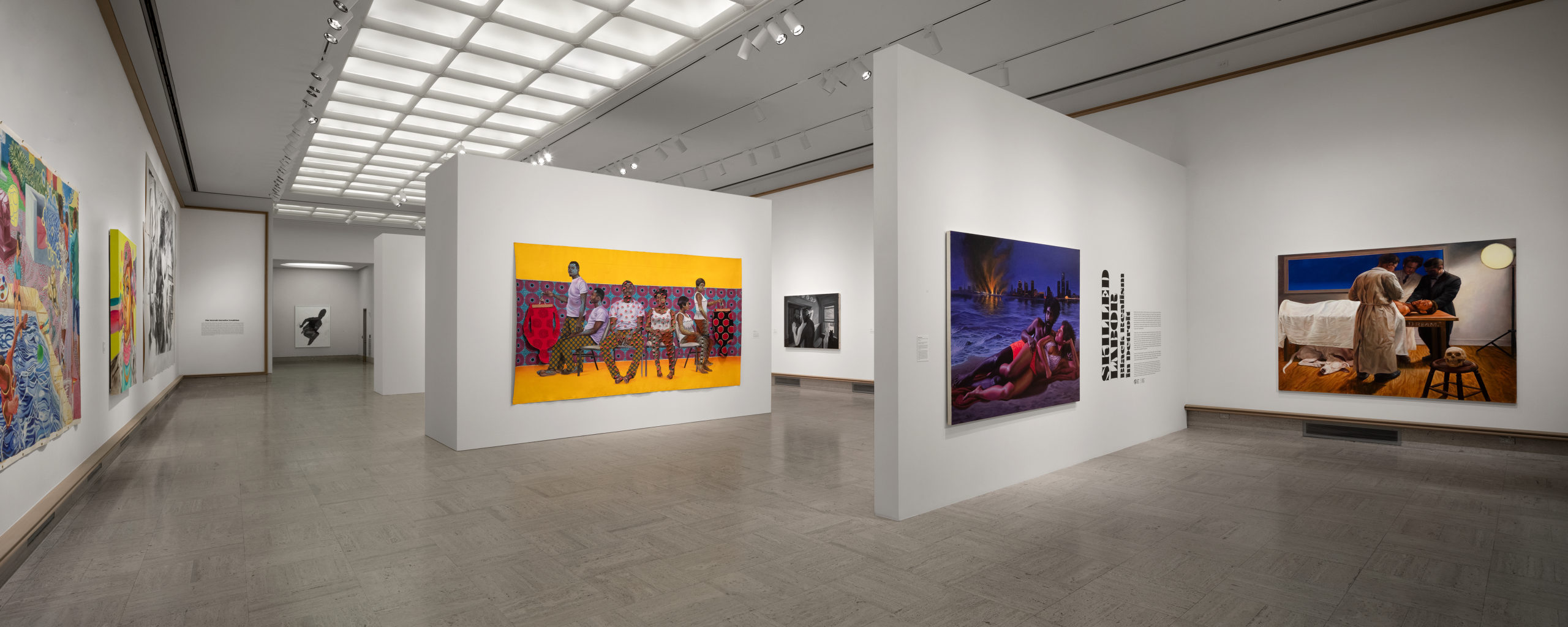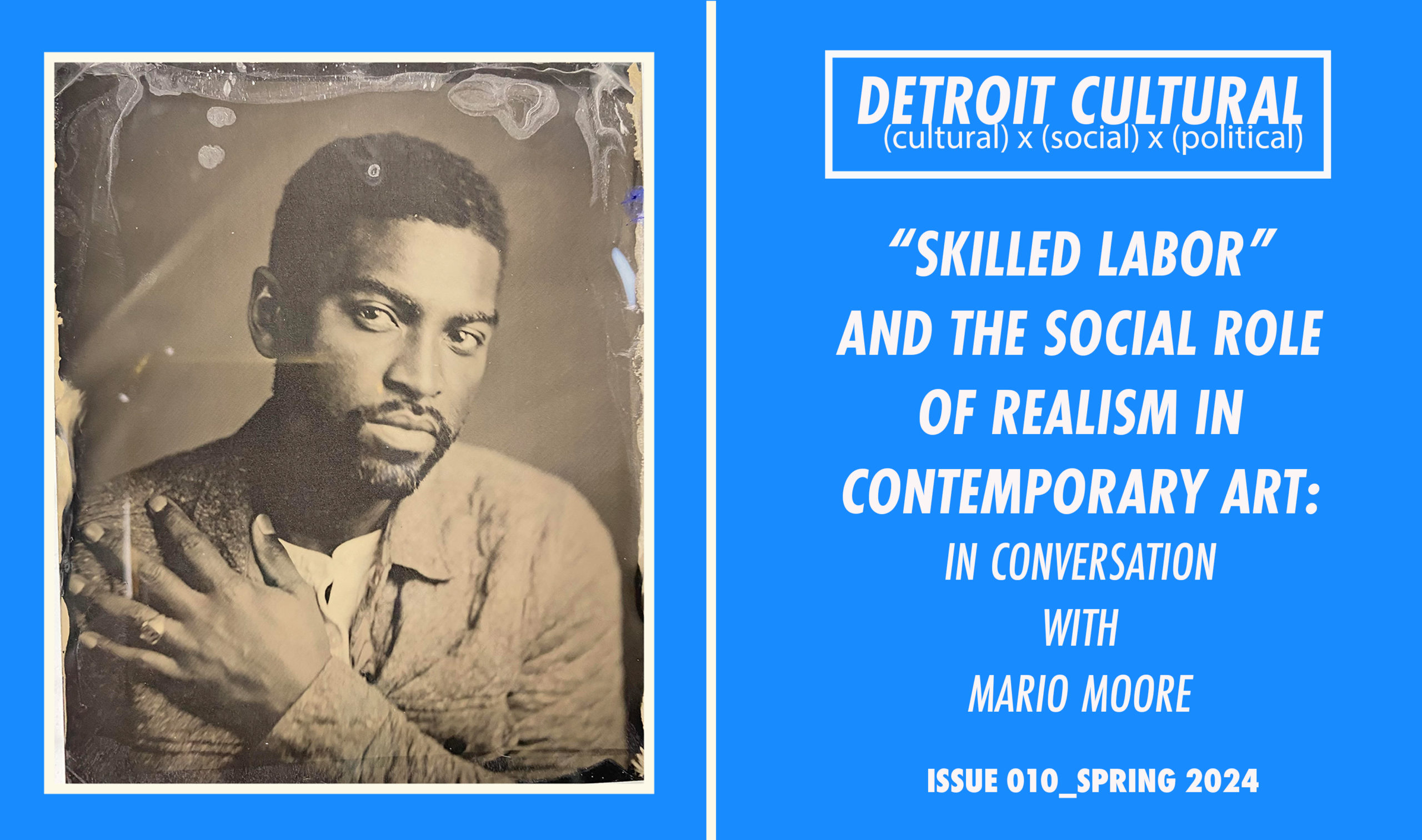Mario Moore, a Detroit native, received a BFA from the College for Creative Studies, Detroit, MI in 2009 and an MFA in Painting from the Yale School of Art, New Haven, CT in 2013. Moore’s paintings focus on the personal, social and political implications of our segregated society. Presenting stories of his own life and those of friends and family, Moore weaves in multiple references to history, art, politics and literature to complete his narrative.
We spoke with Moore about the recent exhibition, “Skilled Labor” which he co-curated at Cranbrook Art Museum.
How did the initial idea for the exhibit arise? How did you go about selecting the artists and specific works by them?
The idea for the exhibition came from Laura Mott, the co-curator of the exhibit and chief curator of Cranbrook Art Museum. We both wanted to consider the deep history of Black artists in Detroit who have focused on realism as a part of their practice. Originally I started to think about the history of artists in Detroit working in this way and the artist list was overwhelming. So instead we focused on the last 10 years of artists who were really conceptually forward as well as skilled in their means of representation.
The exhibition’s introductory text mentions that, “these artists are undertaking the laborious task of art historical and cultural rethinking through acts of representation.” What are the ways in which the works in this exhibition provide this critical rethinking to the field of art history? What makes this task so important?
I think all the artists in the exhibition approach this in different ways and that is what makes the exhibition so special. Western art history generally leaves out any notion of Black ingenuity and creativity and when there are paintings that do have Black figures within them, they are often hidden or subjugated within the composition. Each artist in this exhibition tells stories they want to tell and represent people they want to see. That alone changes who is allowed to be seen and elevated in art history. We are a part of that story, always have been and always will be.
Much of the last century and a half in the field of art has been dedicated to a move away from naturalist approaches to painting. As both an artist and curator working in this specific art historical moment, what do you see as the social role of a realistic approach to figurative painting?
I think the social role in a realistic approach to figurative painting is connection. As humans we seek companionship with others, it is a part of us. It is the reason why museums are filled with work that tell human stories and depict figures. Also I don’t think there is one approach to realistic figurative painting, there are still so many unexplored ways and ideas to figurative painting.

We live in a cultural moment in the United States in which there is a lot of division over race being employed as a way of framing certain experiences (Black Lives Matter vs. “All Lives Matter”; “I don’t see race”, etc.). In this climate in which “color blindness” is continuously used as a tool for ignoring and refuting BIPOC experiences as being shaped by races, what do you find to be important about framing “Skilled Labor: Black Realism in Detroit” as an exhibition that deals specifically with, “the range, depth, nuance and variety of Black life”?
Being a Black man in America is a part of me. It is a part of my experience in this world. The exhibition is the beginning of a much bigger story. Skilled Laborers are a part of Detroit’s history and most Black families in Detroit have a connection to the great migration that led a family member to a specific job based on a skill. The artists in this show carry on that technical prowess and creative curiosity. The framing of the show that deals with the multiplicity of Blackness could only be told through the artists that are here in Detroit.
One of my personal favorite works from the exhibit is your painting, “A Student’s Dream”, a self portrait in which you are represented as lying in a supine position on a surgical table, staring directly at the viewer while being examined by what appears to be three white doctors. It seems to me to reference works such as Thomas Eakins’ “The Gross Clinic”, and the history of medical examination as a scientific endeavor that has been shaped by race. Could you talk about how the idea for this subject matter came to you and its significance within the context of the exhibition?
The painting was unusual for me. I have seen many paintings I admire like Gross clinic or similar paintings by Rembrandt but I never had a desire to create one. This painting literally came from a dream. I saw it while dreaming and woke up and did a sketch, something I never do. Months later I had brain surgery and afterwards started researching early American medical practices. I bought a photography book about the Burns collection which has the earliest American medical images and started to think about my experience on the surgical table and Black bodies used as cadavers. I went back to that dream sketch and the composition was right there. The painting almost created itself, all I had to do was get out of its way.

